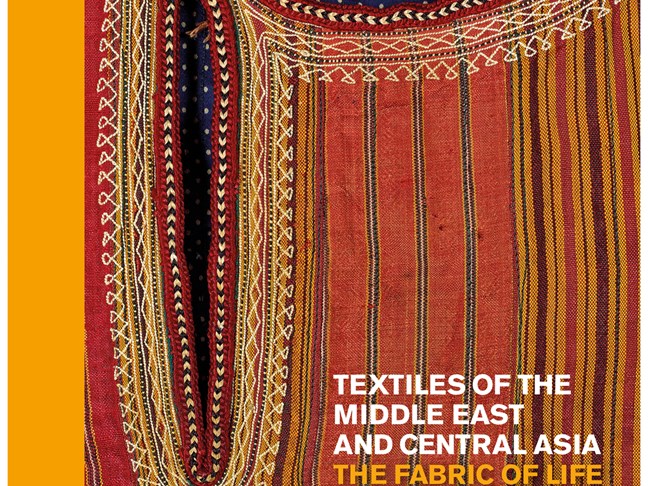Textiles of the Middle East and Central Asia: The Fabric of Life
Textiles of the Middle East and Central Asia: The Fabric of Life
Sunday 29 July 2018

Publication of this book precedes the opening of the British Museum’s new Albukhary Foundation Gallery of the Islamic World, at the end of October 2018. A selection of the garments and textiles featured in beautifully vivid photographs will be displayed in this gallery, providing a textile history of the region on a level with the other decorative arts.
Fahmida Suleman has organised the book thematically rather than by date, region or textile type. This allows cross-cultural comparisons to be drawn through this vast region defined by movement and global trade. The aim is to counter the idea that only the Western world had changing fashions, and it shows the `Islamic world’ to be a global influencer and influencee.
The sections – Childhood; Marriage and Ceremony; Status and Identity; Religion and Belief; House and Homestead; and Politics and Conflict – provide thematic distinctions with an awareness that many are intrinsically entwined: a woman’s religion and status will dictate what she will wear at her wedding; and conversely the way her home is adorned may depend on what was given in her wedding trousseau. The formative chapters show mostly 19th-century textiles. `Politics and Conflict’ however, brings us up to the present day. Some may be disappointed that this text does not include in-depth technical analysis of materials and techniques, but there are other books that cover the mechanics of weave structures and dying processes. This is social history as seen through the lens of textile culture, with captions that name but do not explain how or from what it was made.
Textiles of the Middle East and Central Asia: The Fabric of Life
Fahmida Suleman, Thames & Hudson, 2017, £29.95 hb
Condensed from a review by Ruby Hodgson in DAS Newsletter No. 113